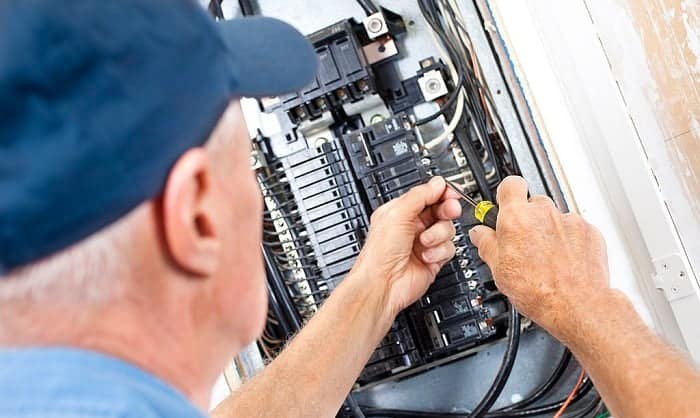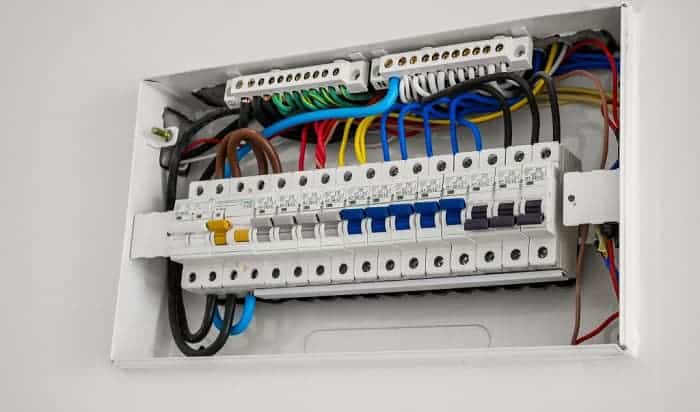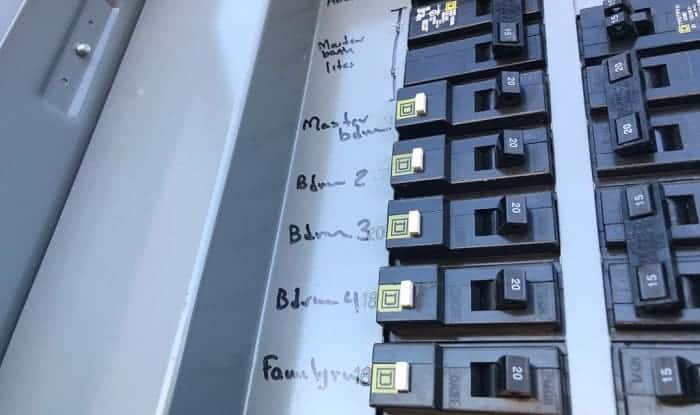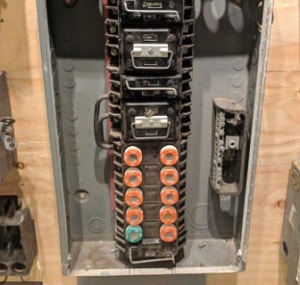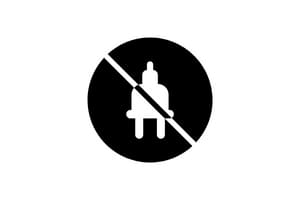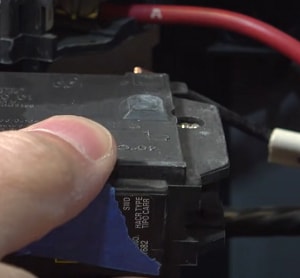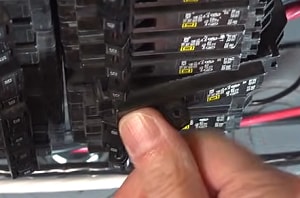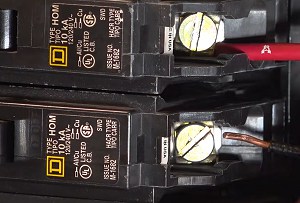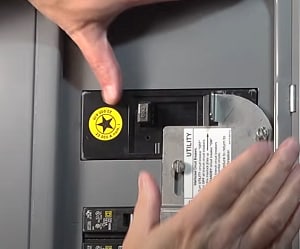If you want to know how to change a fuse box to a breaker box, this is the right article for you. Not only will you learn the procedure of replacing a fuse box, but also the pros and cons of changing your breaker.
However, replacing a fuse box is not for beginners. With this type of work, you need to be familiar with electricity since you will have to disconnect and reconnect your primary power source.
Table of Contents
Tools Needed for Panel Replacement
The tools you need when replacing your panel are:
- Rubber gloves for protection;
- A flathead screwdriver;
- Pliers and a wirecutter with an insulated grip for cutting cables;
- Electrical tape for covering live wire;
- Conduit cutter for modifying electrical ducts;
- Replacement circuit breaker panel with similar dimensions to your new fuse box; and
- New breakers for the primary circuit and each sub-circuit.
The selection of circuit breaker capacity depends on your usage. I highly suggest using a breaker with the same or higher amp-rating as the old fuse you’re going to disconnect. Before shopping for breakers, you should first record the capacity of your primary and sub-fuses on your existing fuse box.
Before You Start
Warning: if you’re unsure of any step or procedure, it’s best to consult with a licensed electrician. Doing this procedure entails working with live electricity, so you should be well protected. I highly recommend that you study the basics of electricity and understand each step well before proceeding.
Step-By-Step Fuse Box Panel to Circuit Breaker Panel Replacement
These are the steps on how to replace your old fuse box with a circuit breaker box.
Step 1: Remove All fuses on your Fuse Box
Before you start removing all the fuses in your box, make sure that there are no appliances or devices plugged into your outlets. Some devices can be damaged when electricity is suddenly cut off.
After that, put on your rubber gloves, remove the fuse panel cover, and turn off the main fuse. Once done, remove all the fuses, including your main fuse.
Step 2: Disconnect the Wires
Remove all the wires in each sub-fuse. You can directly cut the wire heading into the building near where it is attached to the box. Don’t forget to label the individual lines for easy tracing and installation.
After removing all the wires in your sub-circuits, you can now disconnect the primary hot wire. Safely loosen one hot wire and cover it with electrical tape for safety. Repeat the process on the other hot wire and, finally, on the neutral wire.
When working at the last step, ensure that you’re using thick rubber gloves rated for electrical work for your protection. The live wires are hazardous, so take care when working on them.
Step 3: Remove the Main Panel Box
Safely detach the main panel board of your fuse box. Clean and set aside the wires on your panel box, then remove the cable clamps and the conduit from the panel box. Loosen the screws attaching it to the wall and carefully pull it out to remove the panel box.
Step 4: Installing the Circuit Breaker Panel Board and Box
Mount the breaker box on the wall using the provided screws. If the previous mounting holes do not align with the new panel, make sure to mark the required holes and then drill them.
If the existing conduits are a bit long, make sure to trim them using the conduit cutter to fit your breaker box.
Step 5: Install the Wires and the Main Circuit Breaker
Insert all the wires in the box and reattach the cable clamps and conduit connections. Attach the neutral wire to the ground of the circuit panel board. Afterward, attach the two hot wires in the two main connectors at the top of the panel board.
Before connecting each cable to the terminal, ensure that the tip of the wire is exposed for proper contact.
For your safety, install the primary circuit breaker first, then turn it off before attaching each sub-breaker neutral wire.
Step 6: Install and Test the Sub-breakers
Install all the sub-breakers needed and attach all the hot wires to each circuit breaker terminal. Once done, turn off all the circuit breakers and turn on your main breaker. Test each sub-breaker by turning it on one at a time. If the circuit breaker trips, retrace the connection of that sub-breaker and check for any faulty wires in the line.
You can replace and upgrade the whole panel breakers if you have enough knowledge of electricity. For a beginner, I highly suggest that you call a licensed electrician to cut off the main power line that leads into your meter. That way, you can perform your work without the risk of electrocution, as in this video tutorial by UstaTV.
I also recommend visiting and reading the ten best circuit breaker reviews. I wrote this based on my experience installing circuit breakers for multiple projects. In that article, you will understand more about breakers, and you will also discover the pros and cons of every product listed.
Pros and Cons of Fuse Breakers
Pros
- Low price for excellent protection
- More accurate safeguards
- Can be bought in any nearby hardware store
- Easy installation
- Easy to identify which fuse has tripped
Cons
- Since it is a sacrificial device, you need to change it if it trips
Pros and Cons of Circuit Breakers
Pros
- Circuit breakers are sturdier than fuses
- Can be reset features for convenient use
- Able to handle multiple electrical surges
- Modern protection for house electronics
- Can identify a faulty arc
Cons
- More expensive than fuses
Conclusion
Knowing the advantages and disadvantages of a breaker will give you an idea of what type of breaker fits your needs. Learning about installing and upgrading your circuit breaker is essential with this guide on how to change a fuse box to a breaker box, especially if you have an emergency and there’s no available professional to help you.
I highly recommend reading the ten best circuit breaker reviews to help you find the best circuit breaker you will need.
Do you have any suggestions on circuit breaker installation? Share your thoughts in the comments section below.

I am Andrew Wright. With 8 years of experience designing, installing, and maintaining electrical power systems. I love my job, and I have always wanted to offer others the necessary help so they can take care of their houses.

